Introduction
The world of perfume is a magical one, full of captivating scents and alluring fragrances. But what if you could create a perfume that was uniquely yours, that told your story, and that suited your personality perfectly? This is where homemade perfume making comes into play. Crafting your own perfume is more than just a creative endeavor; it's an art of self-expression that allows you to captivate others with your signature scent. In this comprehensive guide, we'll take you through the enchanting journey of making your own perfume at home, from the very basics to creating your own signature scent.
Why Make Your Own Perfume
Personalization
Creating your own perfume provides the opportunity for a level of personalization that store-bought scents simply can't match. You get to decide which scents resonate with you and blend them to craft a fragrance that's uniquely yours. Your homemade perfume will reflect your tastes, style, and personality, making it one of a kind.
Creative Outlet
For those with a creative spirit, perfume-making offers a unique and artistic outlet. Just as painters mix colors on a palette to create art, you'll blend essential oils to create a symphony of scents. The process is not only enjoyable but also allows you to express your individuality in a tangible way.
Meaningful Gifts
Homemade perfumes make for thoughtful and personalized gifts. You can create fragrances tailored to the preferences of your loved ones, making each gift a memorable and special token of affection. A homemade perfume carries a touch of care and thoughtfulness that's truly unique.
Getting Started
Essential Tools
Before you dive into the world of homemade perfumes, you'll need to gather some essential tools. These include glass bottles for storing your creations, pipettes for precise measurements, and funnels for transferring your fragrances without spilling. Having the right tools makes the process more convenient and enjoyable.
Quality Ingredients
The key to creating a remarkable perfume is using high-quality ingredients. You'll need top-notch essential oils, which are the heart of your fragrances. In addition, you'll need base ingredients like carrier oils or alcohol to dilute and enhance the scent. Investing in the best ingredients ensures your homemade perfume will be of the highest quality.
Setting the Stage
Creating a dedicated workspace is crucial for the perfume-making process. Find a clean and organized area where you can focus on your craft. Make sure to have good lighting, proper ventilation, and a surface that's easy to clean, as some essential oils can be potent and difficult to remove.
The Art of Blending
Blend Essential Oils
The heart of any perfume lies in the blend of essential oils. This is where the magic happens. Start by selecting essential oils that appeal to you. You can experiment with different combinations until you find the perfect mix. Note that essential oils are divided into top, middle, and base notes, each contributing to the overall scent. Combining them in the right proportions is key to crafting a well-balanced fragrance.
Creating Balance
Balancing your perfume is essential to ensure it has depth and complexity. The top notes are the first scents you perceive, the middle notes provide character, and the base notes linger on the skin, making the fragrance last. Learning the art of creating this balance is what sets a great perfume apart from an ordinary one.
Tip for Success
When blending essential oils, remember that less is often more. Start with a few oils and experiment gradually. Keep detailed records of your experiments so that you can recreate your favorite scents. Patience is your best friend in the journey of perfume making.
Making Perfume Naturally
Natural Ingredients
In recent years, there has been a growing interest in natural perfumery. This approach involves using organic, eco-friendly, and sustainable ingredients to create fragrances. Natural perfumes avoid synthetic additives and artificial fragrances, making them a healthier and environmentally friendly option.
Chemical-Free
If you're concerned about exposing your skin to harsh chemicals or synthetic fragrances, natural perfumes are the way to go. By using natural ingredients, you can ensure that your homemade perfumes are free from the potentially harmful substances found in many commercial fragrances.
Holistic Aromatherapy
The use of natural scents in perfumery is often closely aligned with holistic aromatherapy practices. Many believe that the scents we wear can affect our mood and well-being. Natural perfumes allow you to experience the potential therapeutic benefits of essential oils in addition to smelling fantastic.
Homemade Perfume Recipes
One of the most exciting aspects of making your own perfume is experimenting with different scents and creating unique fragrance recipes. Here are some homemade perfume recipes to get you started:
Romantic Rose Garden
Ingredients:
- 10 drops of Rose essential oil
- 5 drops of Jasmine essential oil
- 3 drops of Lavender essential oil
- 10 ml of a carrier oil (such as sweet almond oil)
Instructions:
- In a glass bottle, combine the essential oils and the carrier oil.
- Seal the bottle and shake gently to blend the ingredients.
- Let the mixture sit for a few days to allow the scents to meld.
- Enjoy your romantic rose garden perfume.
Zesty Citrus Splash
Ingredients:
- 8 drops of Lemon essential oil
- 5 drops of Lime essential oil
- 4 drops of Orange essential oil
- 15 ml of vodka
Instructions:
- In a glass bottle, combine the essential oils and vodka.
- Seal the bottle and shake gently to blend the ingredients.
- Allow the mixture to sit for a few days for the scents to harmonize.
- Your zesty citrus splash perfume is ready to use.
Earthy Woods and Spice
Ingredients:
- 8 drops of Sandalwood essential oil
- 5 drops of Patchouli essential oil
- 2 drops of Cedarwood essential oil
- 10 ml of a carrier oil (such as jojoba oil)
Instructions:
- In a glass bottle, combine the essential oils and the carrier oil.
- Seal the bottle and shake gently to mix the ingredients.
- Let the mixture sit for several days to develop the scent.
- Enjoy the earthy woods and spice perfume you've created.
Creating your own perfume recipes is part of the fun and experimentation in perfume making. Try different combinations of essential oils and base ingredients to find the scents that resonate with you.
Read More - Smart Home Devices to Transform Your Space into the Future
Create Your Own Cologne
Cologne is not just for men; it's a versatile fragrance that anyone can enjoy. Here's how to create your very own cologne:
Know the Difference
Before you start, it's important to understand the difference between perfumes and colognes. Perfumes have a higher concentration of essential oils and tend to last longer. Colognes have a lighter scent and typically contain a smaller percentage of essential oils. They're often used as a refreshing, daily fragrance.
Homemade Cologne
To craft your cologne, follow a similar process to perfume making, but use lighter scents and a lower concentration of essential oils. Some popular cologne ingredients include citrus oils (like lemon, lime, and bergamot) and herbaceous scents (such as lavender and rosemary). Experiment with different combinations to find the cologne that suits your style.
Unisex Scents
Don't be constrained by gender stereotypes when creating your cologne. Many scents are unisex, and it's all about personal preference. If you're sharing your homemade cologne with loved ones, you can craft scents that appeal to a wide range of tastes.
Read More - Unlocking the Secrets to A Radiant Skin
Tips for a Long-Lasting Scent
Once you've created your perfect fragrance, you'll want it to last as long as possible. Here are some tips to ensure your scent lingers throughout the day:
Storage Wisdom
To preserve the quality of your homemade perfume, store it in a cool, dark place away from direct sunlight and temperature fluctuations. Glass bottles with airtight seals, especially those in amber or dark colors, are ideal for protecting your fragrance.
Application Techniques
Apply your perfume to pulse points for a longer-lasting effect. These areas, such as the wrists, neck, and behind the ears, emit heat, which helps disperse the scent. A little goes a long way, so avoid overdoing it.
Preserving Scent
Dark glass bottles also help protect your perfume from light exposure, which can degrade the quality of the essential oils. Make sure to seal the bottle properly after each use to prevent evaporation and maintain the scent's integrity.
Personalization and Signature Scents
The journey of making your own perfume isn't just about creating a scent; it's about self-expression. Your signature scent is a reflection of your unique personality and style. It's the embodiment of your identity captured in a bottle.
The Quest for Uniqueness
Crafting your own perfume provides an unparalleled level of personalization. You can experiment endlessly, creating scents that are entirely unique to you. Your perfume can become your olfactory signature, instantly recognizable to those who know you.
Testimonials
Many individuals who have delved into homemade perfume-making have discovered their own signature scents. These personal success stories show how the creative process of crafting fragrances can be a deeply rewarding and fulfilling experience.
Creative Freedom
The creative freedom you have in making your own perfume is limitless. There are no rules, only guidelines to help you along the way. Your perfume journey is a voyage of self-discovery and a celebration of your individuality.
Conclusion
Crafting your own perfume is an exciting journey of self-discovery and creativity. It allows you to express yourself in a unique way and capture your essence in a bottle. Whether you're seeking to create a fragrance that's uniquely yours or make memorable gifts for loved ones, homemade perfume making is a satisfying and rewarding art.
Additional Resources
For those who wish to explore homemade perfume making in more depth, there are plenty of resources available. Consider delving into books, websites, and video tutorials to further enhance your skills and knowledge. Learning from experts and fellow perfume enthusiasts can provide valuable insights and inspiration for your fragrance crafting journey.
Frequently Asked Questions (FAQs)
Q1: Can I really create my own unique perfume at home?
A1: Absolutely! By blending essential oils and experimenting with different scents, you can craft a fragrance that's one-of-a-kind and perfectly tailored to your preferences. It's a fun and creative process.
Q2: What are the must-have tools and ingredients for homemade perfume?
A2: You'll need glass bottles, pipettes, funnels, high-quality essential oils, and base ingredients like carrier oils or alcohol. These tools are essential for crafting and storing your unique scents.
Q3: Can I make natural perfumes at home?
A3: Yes, you can. Using natural, organic, and eco-friendly ingredients allows you to create fragrances without synthetic additives. This approach is often aligned with holistic aromatherapy practices.
Q4: Are there any tips for preserving the scent and making it last longer?
A4: Storing your perfume in a cool, dark place, applying it to pulse points, and using dark glass bottles for storage can all help preserve your homemade perfume and make it last longer.
Q5: Can I create my signature scent in the form of cologne?
A5: Certainly! You can craft your own cologne with distinct scents and variations. The process is similar to making traditional perfumes but tailored to your cologne preferences.
Q6: How do I avoid overwhelming or unpleasant fragrances while blending essential oils?
A6: Keeping detailed records of your experiments is crucial. Start with small quantities, take notes, and be patient. Blending is an art that improves with practice.
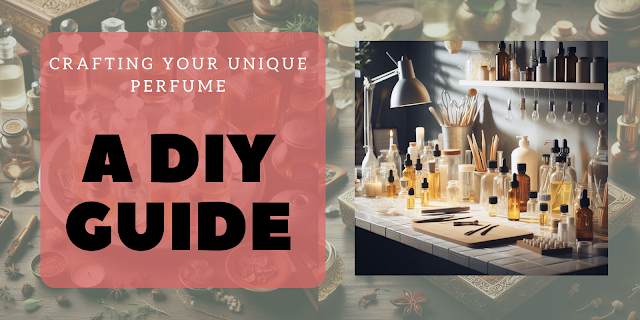
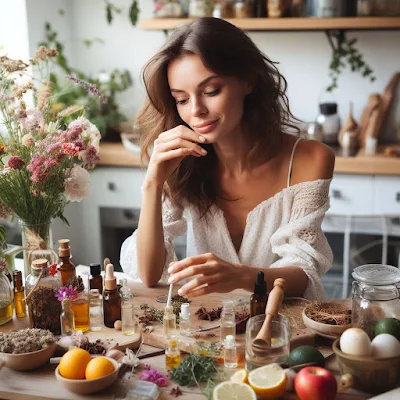
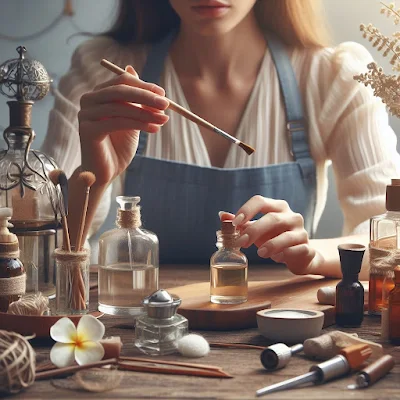
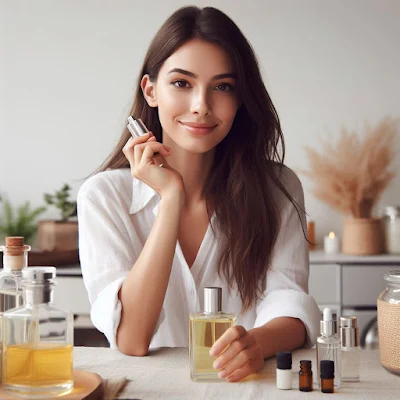
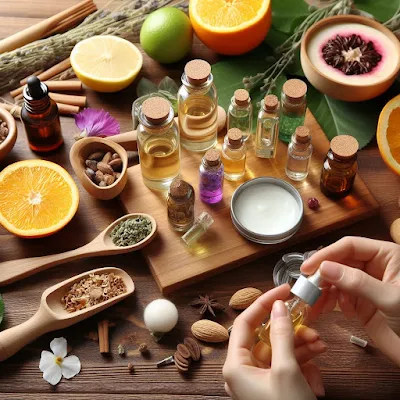



Comments
Post a Comment